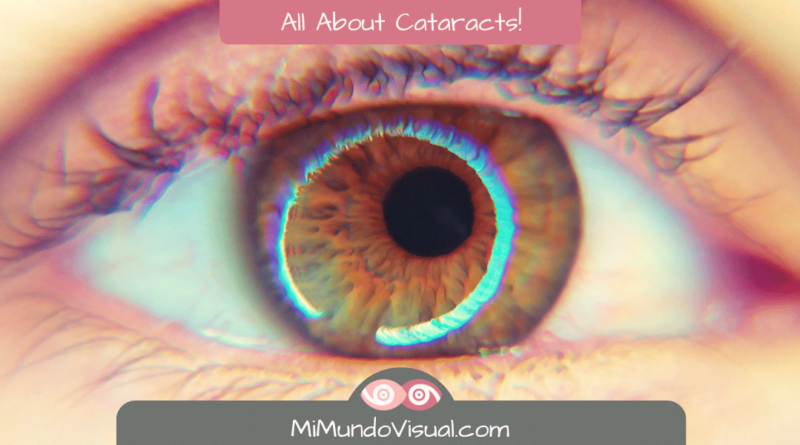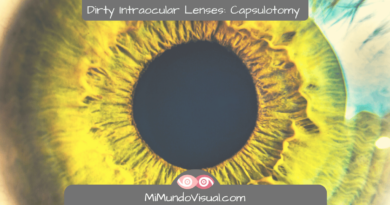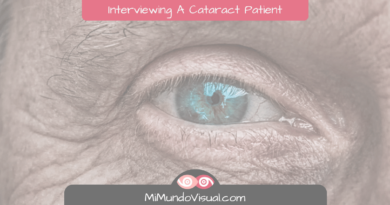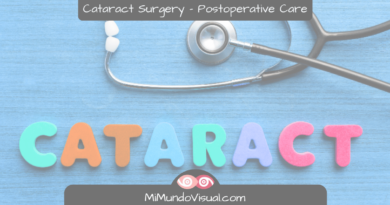6 Common Questions About Cataracts!
Table Of Contents
In this blog post, we will cover all you need to know about Cataracts by answering 6 common questions about Cataracts.
Have you ever wondered:
- What it is like to have a vision that suffers from cataracts?
- What causes the formation of cataracts?
- How does the severity of cataracts evolve?
- Can Cataracts be prevented in any way?
- What is the crystalline lens, its function, and so on…?
So if you want to broaden your knowledge about cataracts, you have come to the right place. Cataracts are caused by the opacity of the crystalline lens.
We have compiled 6 questions covering many of your doubts about Cataracts.
- #1 What are cataracts in the eyes?
- #2 What is it like to have a vision that suffers from Cataracts?
- #3 Why do Cataracts form?
- #4 How do Cataracts evolve?
- #5 How are Cataracts diagnosed?
- #6 What to do to prevent cataracts?
#1 What are cataracts in the eyes?
Cataracts in the eyes refer to the fact that the crystalline lens, our eye lens, is not as clear as it should be. It is more opaque or cloudy, making it difficult for a person with Cataracts to see.
At first, the opacification may occupy only a tiny part of the lens. But as cataracts grow, they become more opaque, thus making it increasingly harder to see clearly.
Cataracts are the world’s leading cause of disability, according to the Ocular Microsurgery Institute.
Nearly 17 million people around the world have blindness due to Cataracts that can actually be remedied. Cataracts can be treated!
#2 What is it like to have a vision that suffers from Cataracts?
What Happens When A Person Has Cataracts?
The vision of the person with cataracts is not as sharp. Instead, their vision is blurry, hazy, or foggy.
They may have difficulty seeing at night, increasing their sensitivity to light and glare. You may also see halos around lights.
You may need brighter light to read and may suffer from double vision. You could also experience color vision loss (mainly yellowish color).
In addition, the prescription of your eyeglasses or contact lenses will change frequently. You will lose visual acuity that will not improve with optical correction.
#3 Why do cataracts form?
Cataracts form because the crystalline lens, which at first is transparent and flexible, becomes opaque and less elastic. This is mainly due to some conditions related to the person’s age.
The crystalline lens is the main enabler for the accommodation process in our eyes which is the mechanism that allows us to focus on objects that approach us.
As a result of aging and oxidative processes in our body, the crystalline lens loses its transparency and elasticity, which progressively provokes Cataracts (due to its reduced transparency) and Presbyopia (due to its reduced elasticity).
Other Conditions That Can Cause or Accelerate Cataracts:
Other conditions can also cause or accelerate the development of cataracts.
This usually relates to crystalline tissues of the lens gathering or breaking, making some parts of the lens more opaque.
What can also cause or accelerate the development of Cataracts?
- The intake of certain drugs,
- Chronic unprotected exposure of the eyes to sunlight
- Smokin
- Diabetes.
It is also possible to have cataracts from birth, which can be spontaneous or associated with an intrauterine infection or pathology.
#4 How do cataracts evolve?
According to the Spanish Society of Ophthalmology, it is:
‘A benign physiological process, which evolves gradually, producing progressive loss of vision.’
The evolution of cataracts can be very variable and difficult to predict. It is, therefore, necessary for the ophthalmologist to monitor how cataracts evolve.
Some cataracts develop rapidly, while others progress slowly over time.
#5 How are cataracts diagnosed?
Cataracts are diagnosed by an ophthalmologist by performing, in most cases, a slit lamp examination with a dilated pupil.
Or utilizing an ocular ultrasound to visualize the inner part of the eye.
Other less commonly used tests for the diagnosis of cataracts are by means:
Contrast sensitivity test, glare test, potential vision test, and specular microscopy.
#6 What to do to prevent cataracts?
Although no study shows that it is possible to prevent the development of cataracts, some advice, according to Mayor Clínic, could be useful:
- Include in the diet a lot of fruit and vegetables to ensure, in this way, the contribution of vitamins and minerals.
Fruit and vegetables contain many beneficial antioxidants for maintaining good eye health.
- Have regular eye examinations to detect early any eye disease, such as cataracts.
- Control the treatment plan for other diseases.
For example: If you suffer from other diseases that may increase the risk of suffering from cataracts, such as diabetes.
Avoid smoking and reduce alcohol consumption.
Wear sunglasses that block ultraviolet B rays. Sunlight can help develop cataracts.
Recommendations to Prevent Cataracts
Therefore, it is recommended to pay special attention to avoid habits harmful to eye health that may contribute to the development of cataracts, such as:
Smoking, alcohol, an unbalanced diet, or exposure to the sun’s rays without adequate protection.




